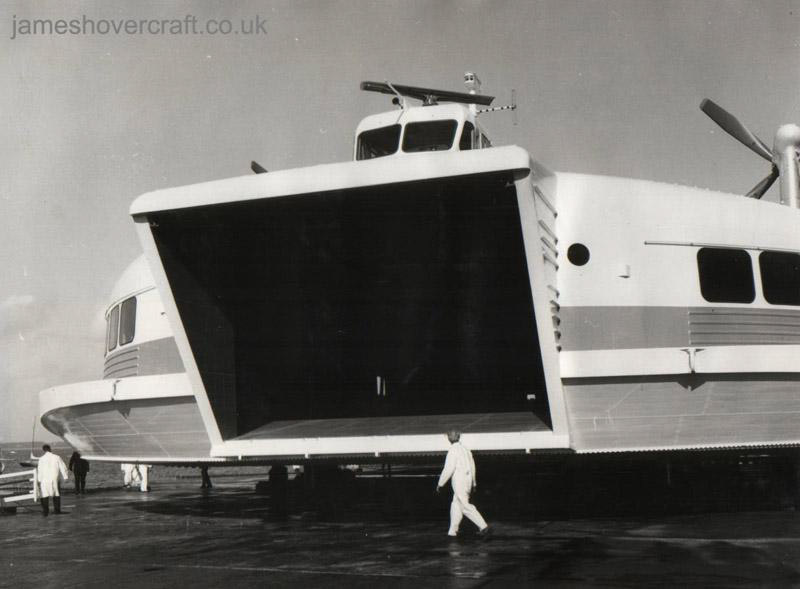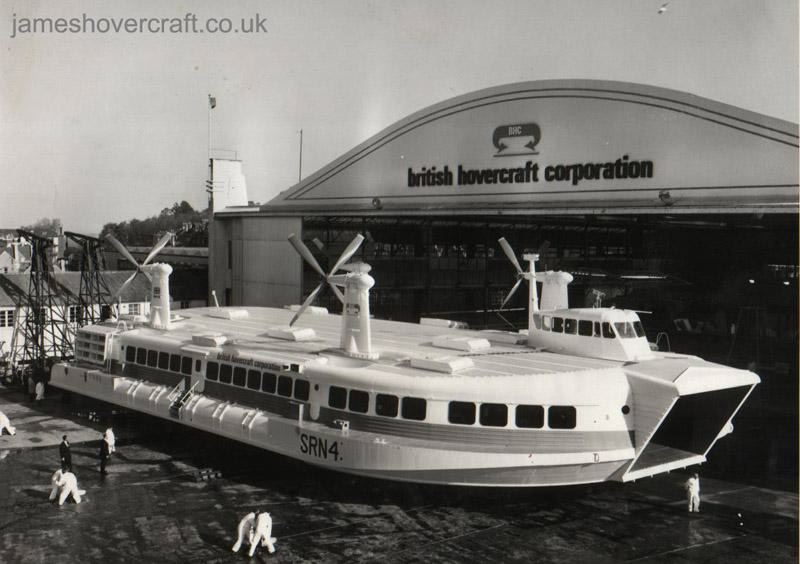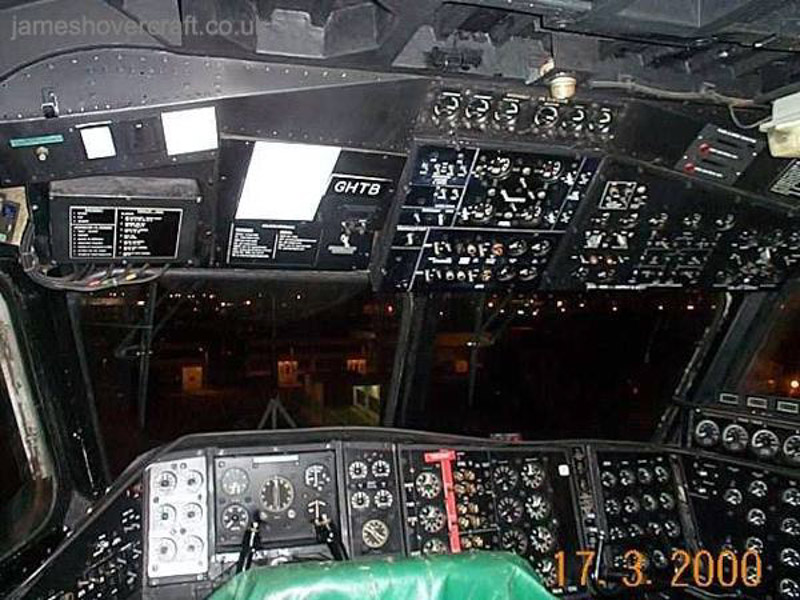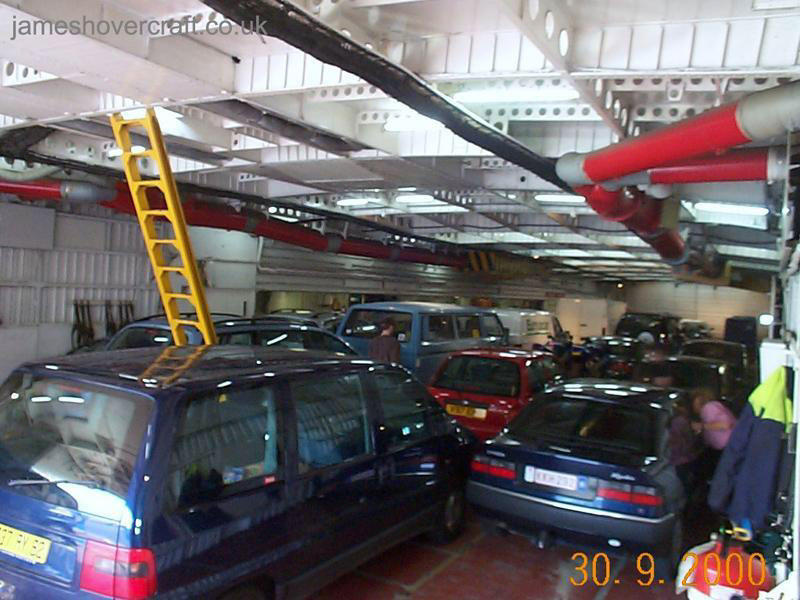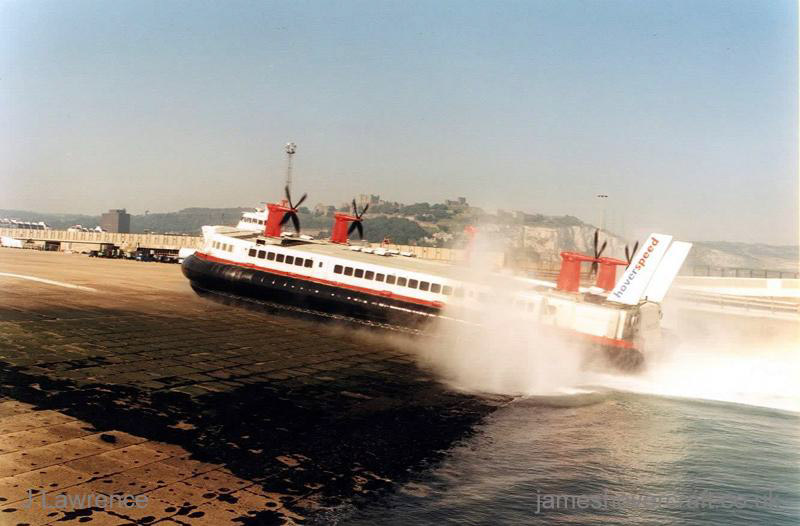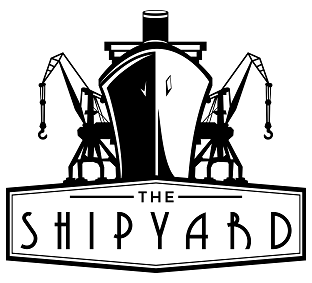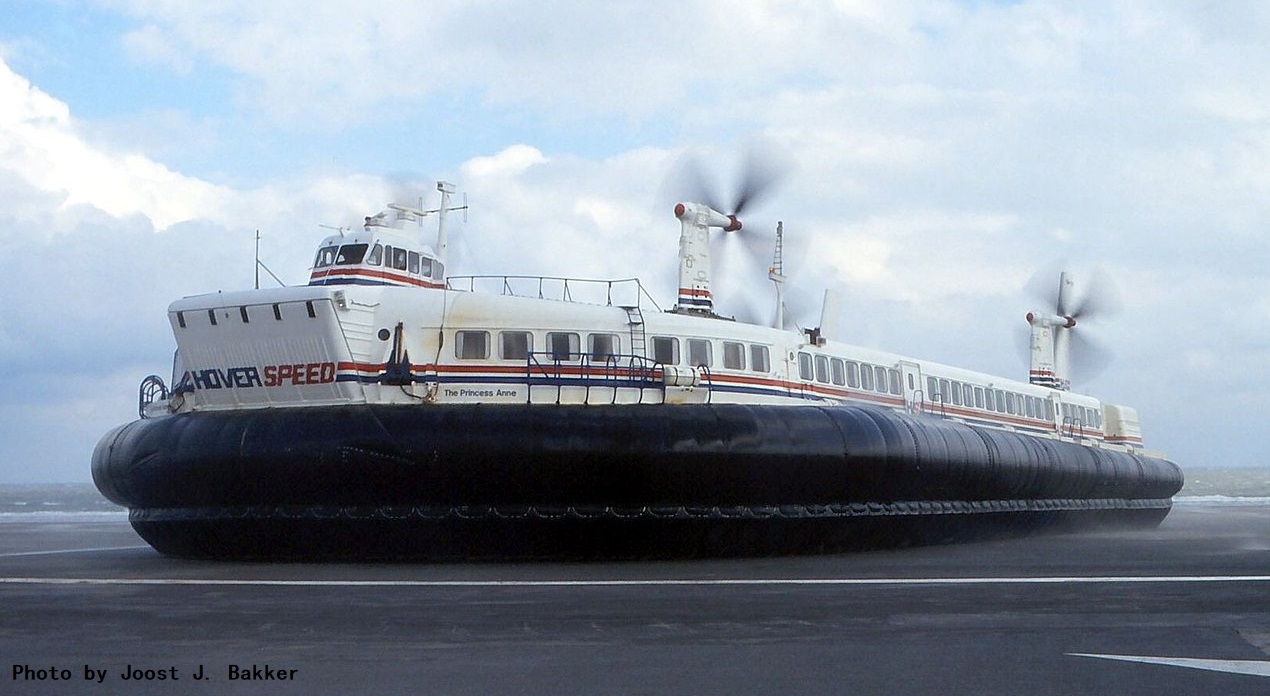In any conversation about Britain’s passenger hovercraft program, it is only a matter of time until the word “awesome” gets thrown in. And indeed, those surreal-looking hybrids combined the cream of 20th century technology to overcome the limitation of the elements. Powered by aircraft engines and floating on compressed air, they displayed impressive talents on water, dry land, ice, and mud. At their pinnacle in the late 1970s, British air-cushion vehicles were large, futuristic, and faster than any other form of cross-Channel transportation. And despite the bumpy ride, travelers could not get enough of them, with tickets often sold out for weeks ahead. Yet, the British passenger hovercraft is now all but extinct. How come? Why did Europe’s once most iconic mode of transportation end up in museums and scrapyards, after 30 years of operation?
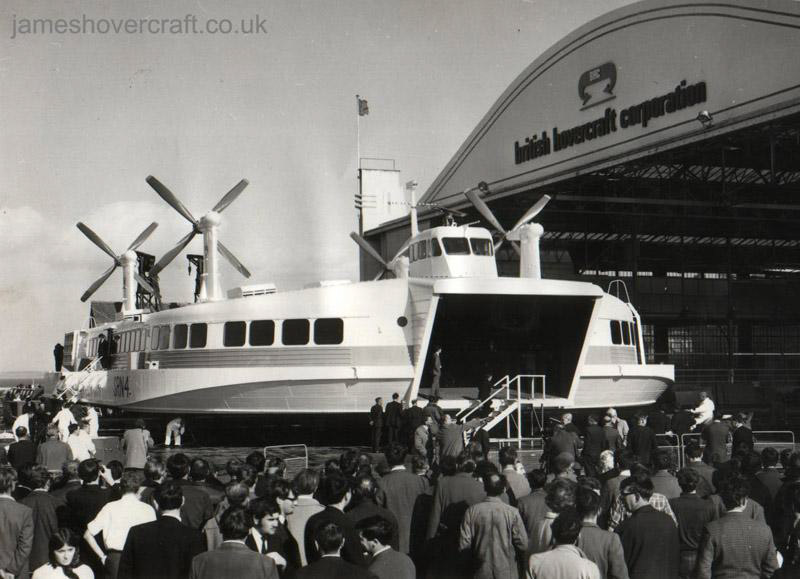
Make Her Fly
Hovercraft history goes a long way, with some avantgarde designs by British shipbuilder John Isaac Thornycroft in the 1870s, but the first to build a working prototype was Dagobert Müller von Thomamühl. In 1915, the Austrian inventor and naval officer fitted a specially designed torpedo boat with five Austrodaimler aircraft engines, one powering an air-compressor, the other four providing surface propulsion via two submerged marine propellers. The compressor blew air from the front and along the length of the hull, producing sufficient lift to raise the vessel up to 10 inches (25 cm). With a dizzying top speed of 32 knots, the contraption attracted some attention from the top brass in Trieste, but as the Great War dragged on, aircraft engines became more valuable than torpedo boats, and the invention was scrapped.
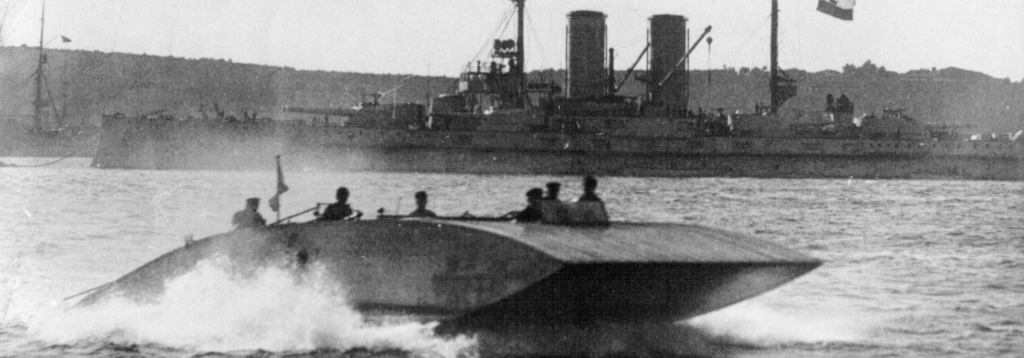
In the following decades, numerous countries tried their hand at the novel concept. In the 1930s, Finland’s Toivo Kaario designed a prototype with a flexible envelope, while Soviet engineer Vladimir Levkov chose to experiment with rigid materials. During World War II, the United States (ever the car-fans) focused on land-based hovering vehicles, but the efforts of several inventors and corporations only produced a handful of prototypes, the most famous of which bears a remarkable resemblance to a bumper car.
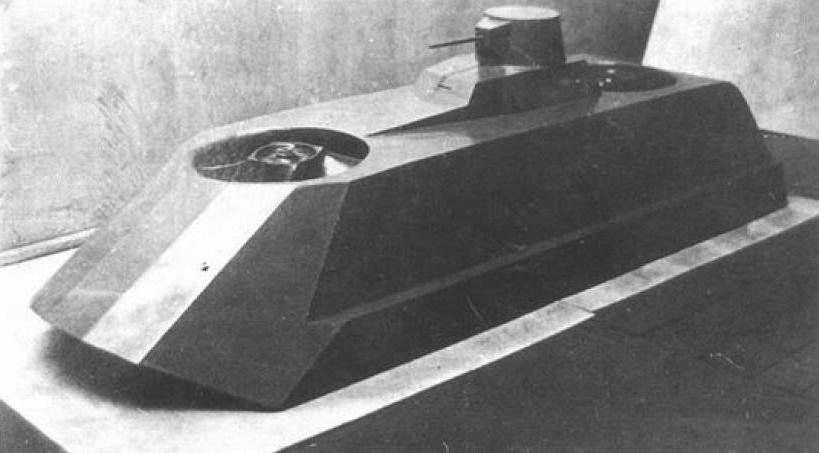
The Breakthrough
Modern hovercraft were pioneered by Christopher Cockerell, shortly after the end of WW2, with his discovery of the “momentum curtain” – a much more efficient air cushion, created by channeling the air downward into the annular area of two concentric containers. The resulting lift was several times greater than previous prototypes, making the hovercraft a potentially viable commercial concept. After numerous failed attempts to impress Britain’s navy, army, and air force, Cockerell obtained funding from the National Research Development Corporation to build the world’s first practical hovercraft – the Saunders-Roe Nautica 1.
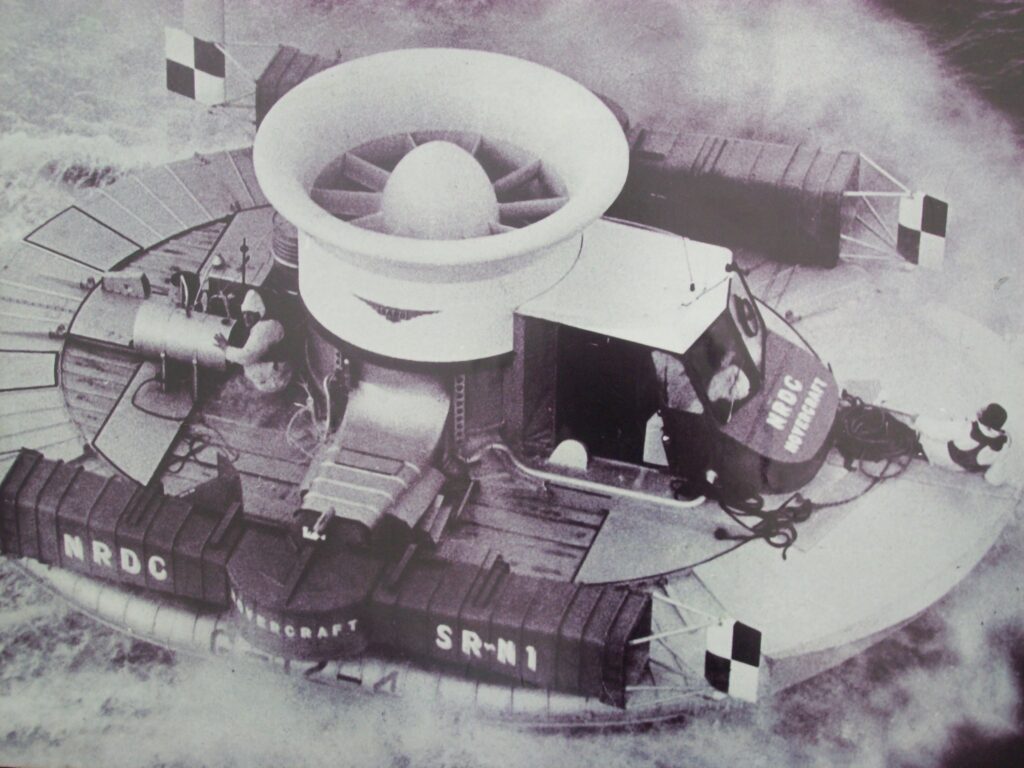
Even for modern standards, the 1959 SR.N1 was eye-catching, with a prominent cylindrical center piece housing the engine and fan. A 450hp radial-piston aircraft engine turned the powerful fan, supplying both vertical lift and longitudinal thrust to elevate the craft and propel it forward. And just like an airplane, weight was crucial for the SR.N1’s efficiency, so the hull tank was made of riveted aluminum-alloy sheets. But the most impressive thing about the prototype was its speed – in 1959 it crossed the English Channel in just over two hours, raising eyebrows across the globe, from Paris to Tokyo.
High-Speed Development
Cockerell’s first design demonstrated plenty of advantages to impress several corporations, as well as enough weaknesses to throw engineers into an innovation frenzy. The piston engine had been inexpensive but also insufficient, so switching to a turbojet was a no-brainer. The biggest problem, however, was the rather unimpressive clearance of only 9 inches (23 cm), which compromised stability, safety, and comfort. As the English Channel was not known for smooth sailing, a radical solution was required. British inventor Cecil Latimer-Needham proposed using double rubber-walls, which moved the momentum curtain further away from the bottom, raising the height to 4 feet (1.2 m), but this design soon proved to restrict the airflow and lift. The breakthrough came from inside the National Research Development Corporation, where Denys Bliss made the double wall from a single U-shaped rubber sheet, with apertures at the bottom. The hovercraft technology was now market-ready.
Oh, What Fun It Is to Ride
In the decades that followed, several countries experimented with air-cushion vehicles (including the N500 Naviplane, a 74-knot beast from France), but the technology reached its commercial peak in its homeland, the United Kingdom. No doubt, the most iconic passenger hovercraft were the six gigantic vehicles of the SR.N4 Mountbatten-class, one of which still remains as a museum exhibit.
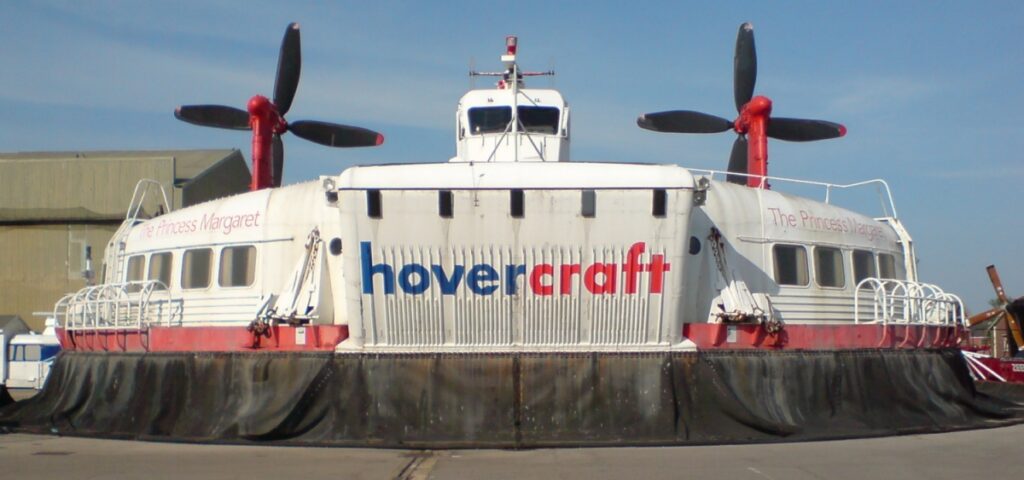
Everything about the SR.N4 was formidable – four Rolls-Royce Proteus gas-turbine engines with cumulative power of 13,600 horsepower, 185 ft (56.4 m) hull length, and enough room for 60 cars and 400 passengers, all flying at 70 knots between Dover and Boulogne. From the skirt up, the most prominent features of the craft were four Dowty Rotol propellers, then the largest propellers in the world. Closer to an aircraft than a ship, the control cabin was quite small and crammed with equipment, but the passenger seating areas offered a first-class luxury experience.
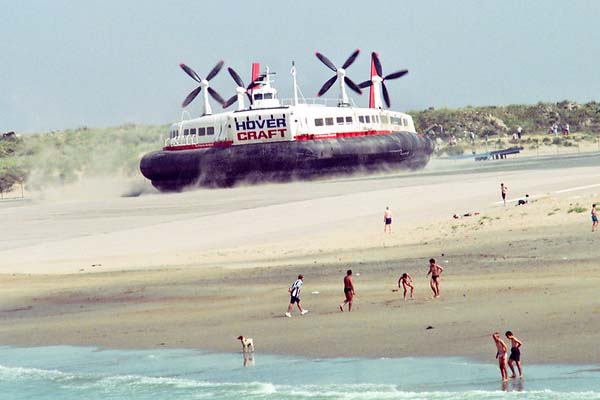
An Obsolete Future
In the 70s and 80s, hovercraft were all the rage. Launched in 1968, the Princess Margaret shortened the Channel crossing to 35 minutes, while in 1995, the newer Princess Anne made the fastest journey ever at just 22 minutes. But the ride was not always as smooth as it was speedy. Far from it – hovercraft offered a notoriously bumpy passenger experience, while steering the powerful machine could be a challenge even for a seasoned master. Despite numerous improvements in the skirt design, the craft were still somewhat vulnerable in rough weather. On a windy 30 March 1985, the Princess Margaret crashed into a breakwater at Dover, leading to 4 casualties, many injured, and severe damage to the vessel.
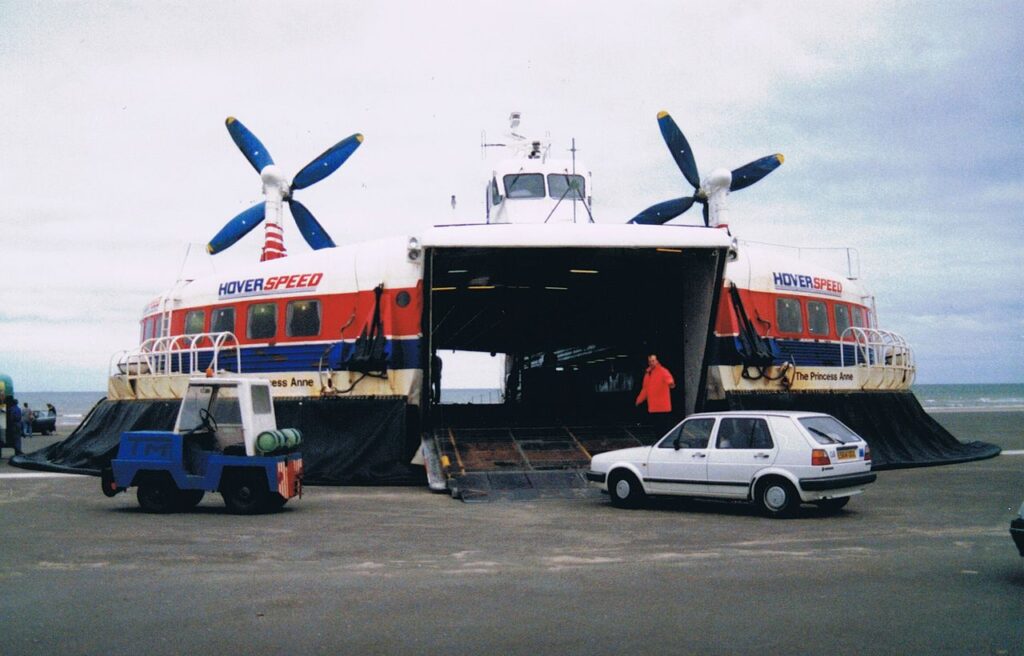
Such incidents, however, were not the reason why this curious species went extinct. It was basic economics – revenues, costs, and competition. The SR.N4 were a nightmare to maintain, plagued by frequent mechanical problems and inherent design limitations (such as the skirts, which could only handle waves of no more than 8 feet or 2.5 meters). The result – at one point, one in every three journeys was cancelled, a heavy financial blow to operators. Add to this the extraordinary running cost of four jet engines, burning 500 gallons of kerosene per trip, and it is easy to see why enthusiasm began to wane after the 1973 oil crisis.
Then came competition, both from other vessels and from alternative modes of transportation. The first high-speed catamaran ferries made their debut in the 1970s, and by the 1990s, they were becoming a common sight in the English Channel. Cheaper to build, easier to run, and more comfortable for passengers, these multi-hulls quickly carved away a substantial market share. In addition, the humble old ferries never lost their appeal, offering reliable service and low fares. But the final nail in the coffin came from an unexpected direction. On 6 May 1994, the Channel Tunnel entered operation, with the high-speed Eurostar railway launching a few months later. Britain’s great hovercraft vessels were headed at 70 knots toward the end.
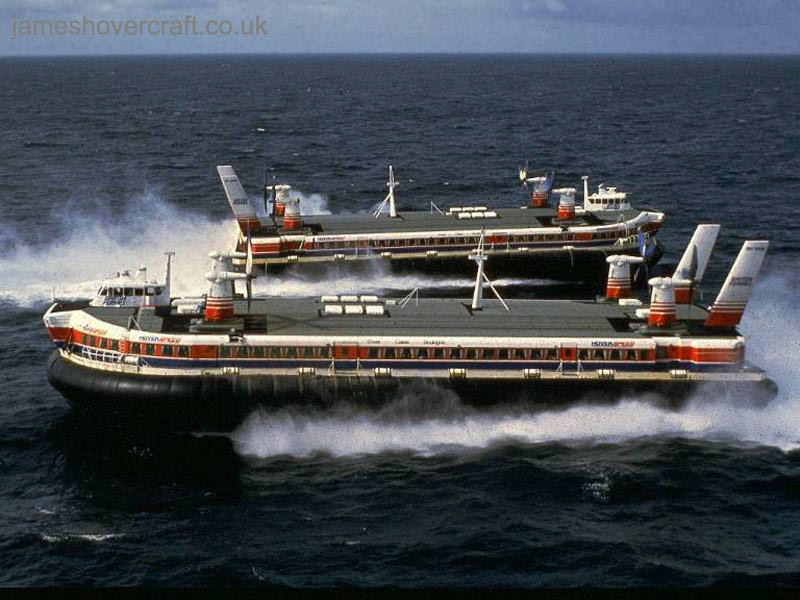
Game Hover
At the time of writing, most passenger hovercraft in Britain have long been scrapped, with the last notable departure being the SR.N4 Princess Margaret, dismantled in 2018. Precious few vehicles still remain at the Hovercraft Museum in Lee-on-the-Solent, including the imposing Princess Anne, as well as two other creations of Christopher Cockerell, an SR.N5 and an SR.N6. The only operator still in existence is Hovertravel, running a regular service between Portsmouth and Ryde with the help of two Griffon craft. And while the Isle of Wight is no Hawaii, riding on the last remaining British hovercraft sounds like reason enough for a quick visit.
Keep scrolling for more hovercraft photos!
Wanna read about some more strange vessels? Click here!
The Shipyard
